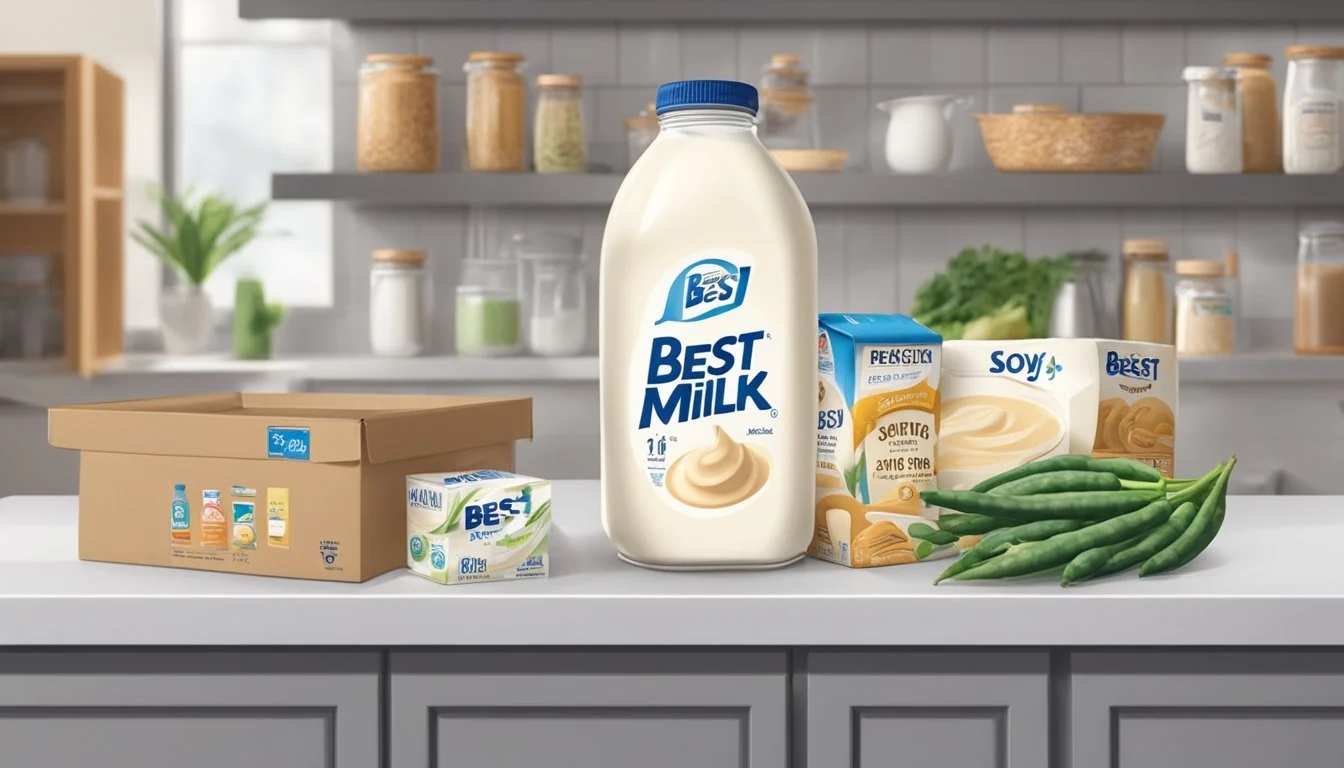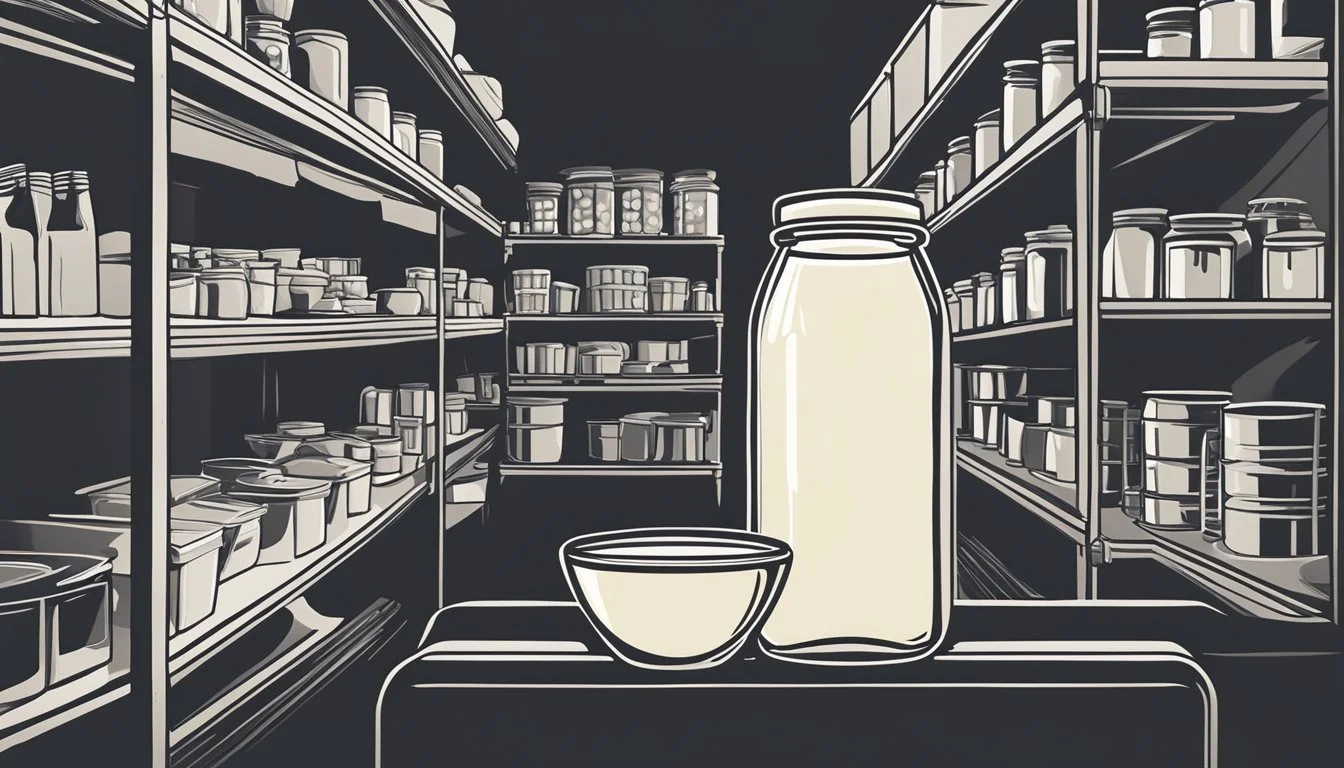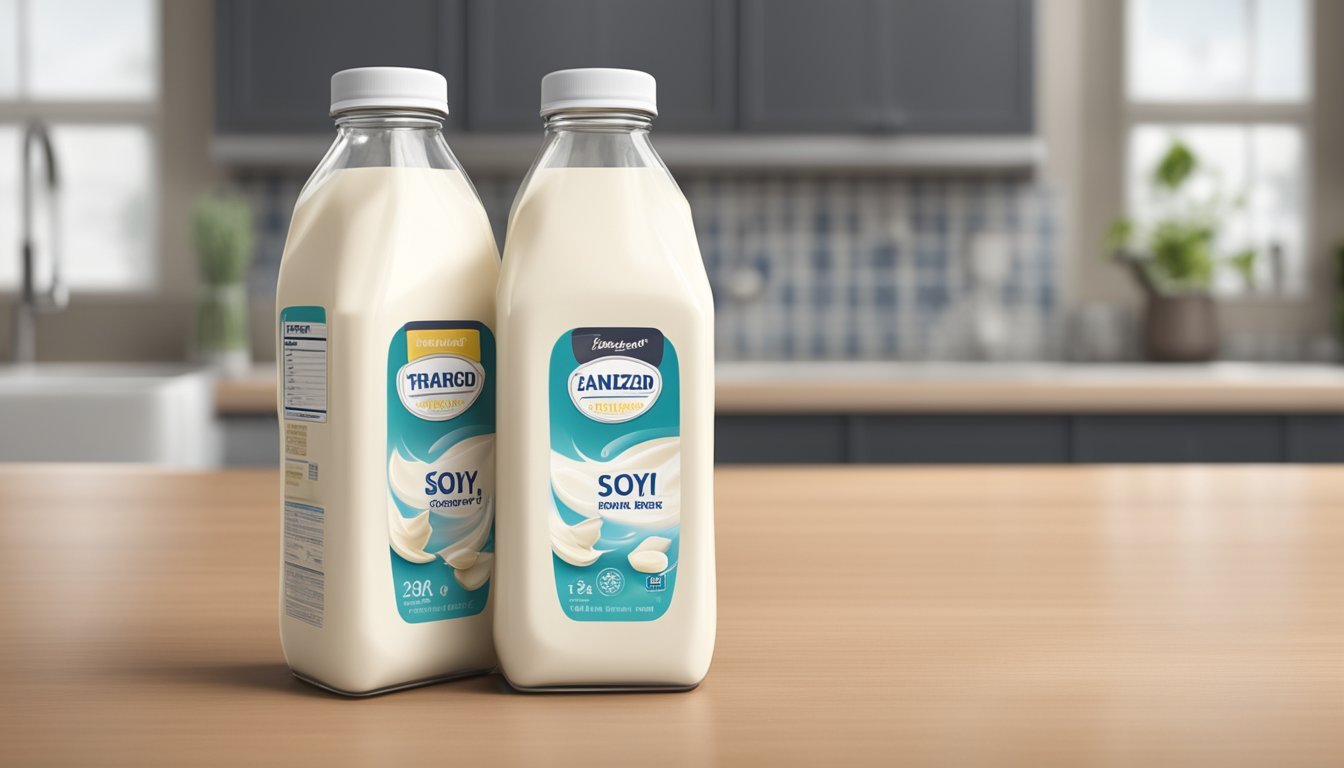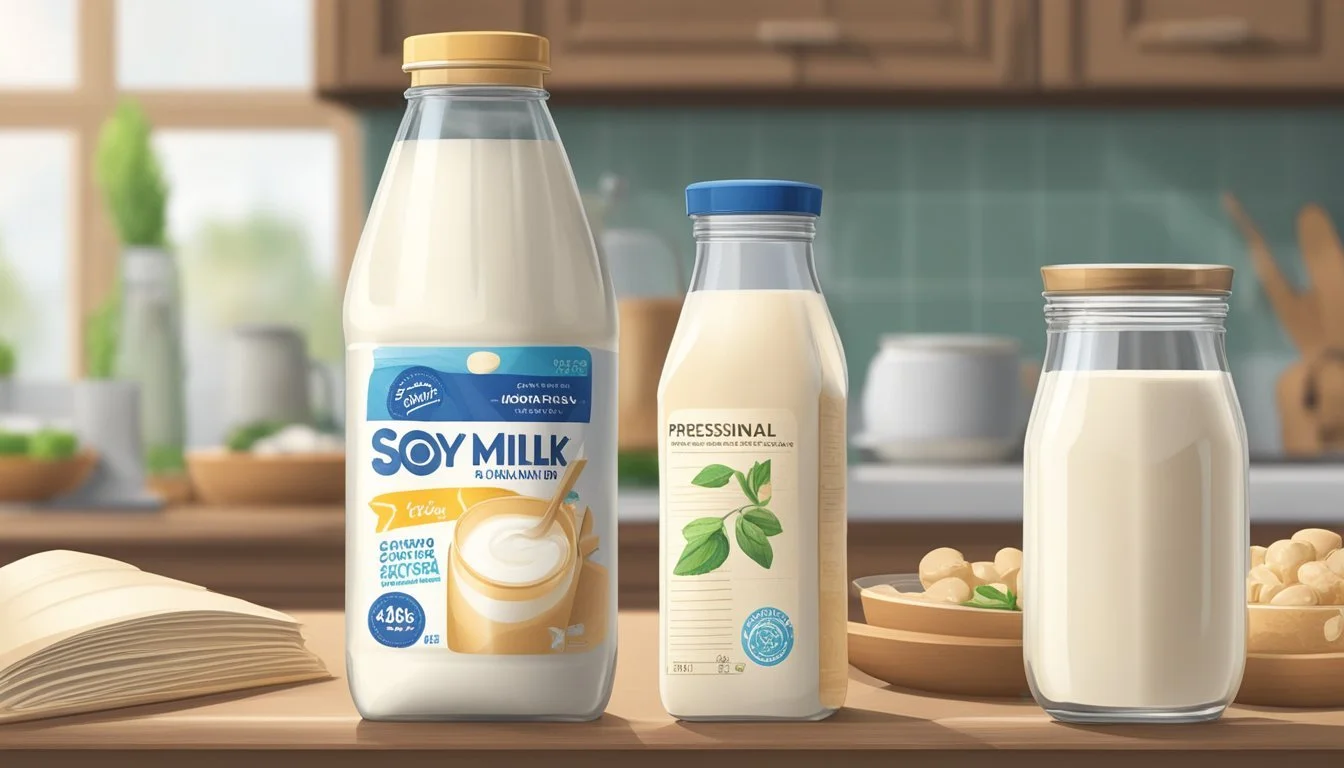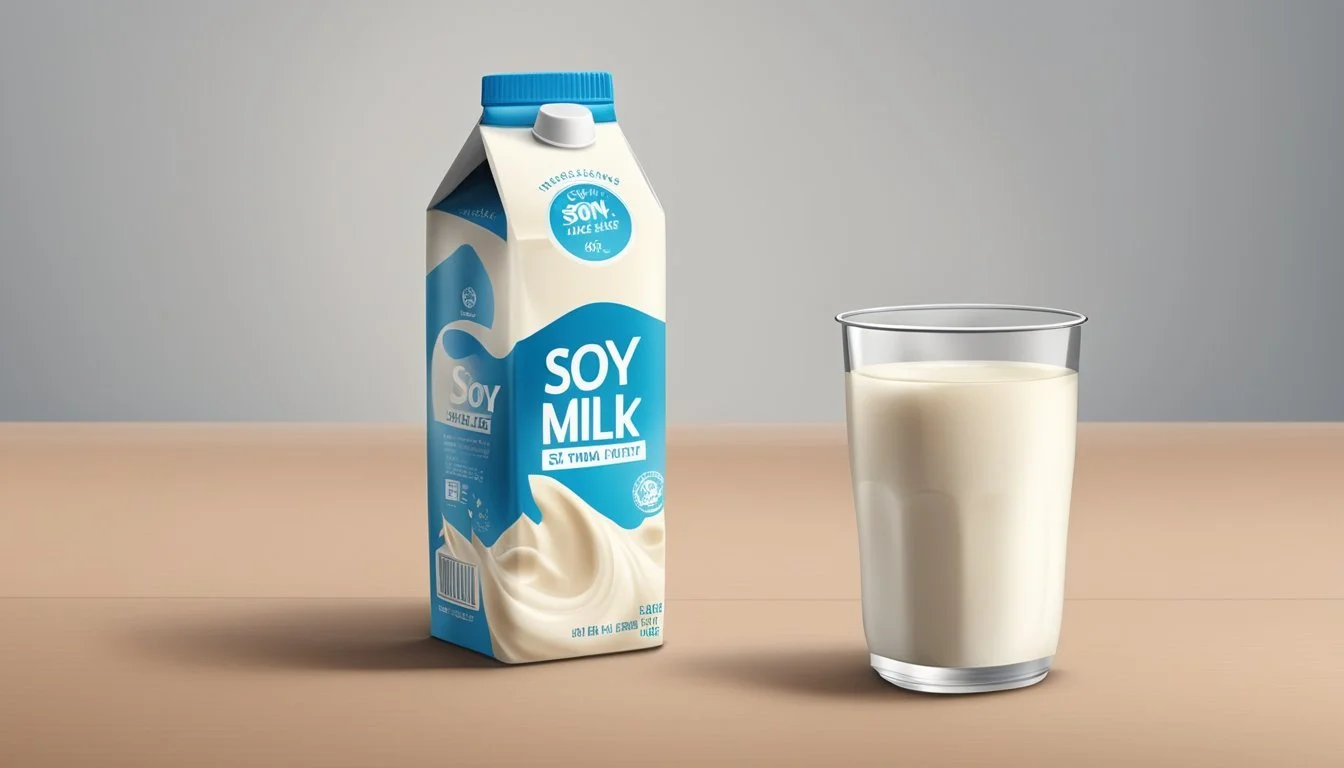How Long Does Soy Milk Last?
Shelf Life and Storage Tips
Soy milk's (how long does soy milk last?) longevity is a topic of interest for many, given its popularity as a dairy alternative. Its shelf life varies based on several factors, including whether it's refrigerated or shelf-stable. Unopened, shelf-stable soy milk can last between 6 to 12 months when stored in a cool, dry place. Once opened, soy milk generally stays fresh for up to 7 to 10 days when kept refrigerated. Consumers can identify the spoilage of soy milk by changes in smell, taste, and texture, making it easy to determine when the milk is no longer safe to consume.
Refrigeration plays a crucial role in extending the life of soy milk post-opening. Soy milk must be stored at the correct temperature to prevent bacterial growth that could lead to spoilage. The expiration date on the packaging can provide a useful guideline for its shelf life, but it's also essential to rely on sensory cues such as sour odor or curdling to assess its quality. Freshly opened soy milk typically has a mild, slightly sweet or neutral taste and a smooth consistency, any deviation from which indicates spoilage.
Understanding Soy Milk
In exploring soy milk, it is important to discern its unique attributes and nutritional profile, especially in comparison with traditional dairy milk. Soy milk stands out as a plant-based alternative, offering varied benefits for different dietary needs.
Differences Between Soy Milk and Dairy Milk
Soy milk, derived from soybeans, (how long do soybeans last?) is a non-dairy milk alternative favored by many who seek lactose-free or plant-based options. Unlike dairy milk, which is sourced from animals, soy milk is inherently cholesterol-free and lactose-free, making it suitable for those with lactose intolerance or those following a vegan lifestyle. Moreover, soy milk has a distinct flavor and consistency, which may vary from the creamy texture of dairy milk, attributing to its plant-based origin.
Nutritional Content
Comparing the nutritional content of soy milk and dairy milk unveils notable differences.
Vitamins and Minerals: Although both types of milk can be fortified, soy milk naturally contains vitamins such as B6 and B12, as well as minerals like magnesium, phosphorus, and potassium. Dairy milk, on the other hand, is a natural source of calcium and often has added vitamin D.
Calcium: Many soy milk brands fortify their products with calcium to match or exceed the calcium levels found in dairy milk, ensuring consumers do not miss out on this crucial mineral for bone health.
A comparative analysis in tabular form highlights the contrasts in nutrient profiles:
Nutrient Soy Milk Dairy Milk Original Source Soybeans Cows (or other dairy animals) Lactose Absent Present Cholesterol None Present Calcium Fortified options are comparable Naturally high, commonly fortified Vitamin D Fortified options available Commonly fortified Plant-based Yes No
Soy milk offers a nutrient-dense choice with a composition favorable to those seeking milk alternatives. It remains a competitive option amidst the growing variety of non-dairy milks on the market.
Shelf Life of Soy Milk
Soy milk's longevity largely depends on whether it is shelf-stable or refrigerated, and whether the package has been opened.
Unopened Shelf-Stable Soy Milk
Unopened shelf-stable soy milk, thanks to its aseptic packaging, can typically last between 6 to 12 months from its manufacturing date when stored in a pantry at room temperature. The precise expiry date is indicated on the packaging. This type of soy milk undergoes extensive heat processing to remain fresh for extended periods without the need for refrigeration.
Unopened Refrigerated Soy Milk
Unopened refrigerated soy milk offers a shorter shelf life compared to its shelf-stable counterpart. Generally, it should be consumed by the expiry date listed on the carton. One can expect it to remain good up until this date, provided it's kept consistently refrigerated.
Opened Soy Milk
Once opened, both shelf-stable and refrigerated soy milk require refrigeration and should usually be consumed within 7-10 days. Any preservatives present cannot extend this window substantially, so it's crucial to be vigilant and discard the product if there are any signs of spoilage or if this time period has lapsed.
Proper Storage Techniques
Proper storage of soy milk can significantly affect its shelf life. Whether refrigerated or on the shelf, keeping soy milk at the appropriate temperature and in the correct container is essential for maintaining its freshness and safety.
Refrigerating Soy Milk
Once opened, soy milk must be stored in the refrigerator to preserve its freshness. An opened container of soy milk will generally remain safe to consume for seven to ten days when kept at a consistent, cold temperature. For optimal preservation, it should be stored in its original container with the cap tightly sealed or in an airtight container to prevent contamination.
Freezing Soy Milk
Freezing soy milk is a viable option to extend its shelf life. However, due to texture changes upon thawing, it's best used for cooking or baking rather than drinking. To freeze soy milk, pour it into an airtight container, leaving some space to allow for expansion. Labels with the date can help keep track of how long it has been stored. Thawed soy milk is best if used within a month of freezing.
Pantry and Shelf Storage
Unopened shelf-stable soy milk can be safely stored in a pantry or other cool, dark place until the expiration date on the package. After opening, even non-refrigerated, shelf-stable soy milk must be refrigerated to ensure safety. Ensure the storage area is clean and away from sunlight or any heat sources, as these can degrade the product and shorten its shelf life.
Avoiding Contamination
To keep soy milk safe for consumption, always use clean utensils when pouring it to avoid introducing bacteria. Once opened, keep the soy milk in a sealed and airtight container to prevent the introduction of contaminants. Do not return unused soy milk to its original container, as this can also cause contamination.
Signs of Spoilage
When determining if soy milk has gone bad, one must pay attention to visual, olfactory, and gustatory cues that indicate spoilage.
Visual and Textural Changes
Soy milk that is fresh and safe to consume typically has a smooth consistency. Visual signs of spoiled soy milk include a color change to an off-white shade and the presence of mold. Texturally, if the once smooth liquid becomes lumpy or separated, these are clear indicators that the soy milk should not be consumed.
Smell and Taste
The smell of fresh soy milk is mild and slightly sweet or beany. Spoiled soy milk often acquires a sour or rancid odor, signaling that it is no longer fit for consumption. In terms of taste, any deviation from the usual mild flavor, especially a distinctly sour taste, are telltale signs of bad soy milk.
Health and Safety
When it comes to soy milk, health and safety are paramount. Consuming spoiled soy milk can lead to food poisoning, so it's critical to understand the risks and implement preventive measures.
Risks of Consuming Spoiled Soy Milk
Spoiled soy milk poses significant health risks. Consuming it can result in symptoms of foodborne illness, including nausea, vomiting, and stomach discomfort. These symptoms can manifest within hours of ingestion and are clear markers that one should not consume the product. Food poisoning, in severe cases, can require medical attention, especially if symptoms persist or intensify.
Preventive Measures
Safe storage practices are essential in preventing the spoilage of soy milk. Soy milk must be refrigerated once opened to maintain safety and clean conditions are crucial when handling the product. Unopened soy milk can be stored at room temperature, but always check the product's expiration date. Upon opening, one should consume it within a week, and always smell and visually inspect for any signs of spoilage before consumption. If there is any doubt about the milk's quality, it is safer to discard it.
Usage in Recipes
When incorporating soy milk into recipes, individuals should consider its shelf-life, as well as its role as a versatile ingredient in various culinary applications. Soy milk behaves differently than dairy milk under heat and can uniquely influence the taste and texture of dishes.
Culinary Uses
Soy milk is a staple in plant-based diets and is frequently used as a dairy substitute in numerous recipes. It is commonly incorporated into smoothies, providing a creamy texture without the use of dairy milk. Its stability under heat also makes it suitable for cooking, where it can be used in sauces, soups, and baked goods. Many people use soy milk as a coffee creamer, enjoying its mild flavor and lower fat content compared to traditional creamers.
Smoothies: Adds creaminess and complements various flavors.
Cooking: Ideal in sauces and soups, maintains consistency under heat.
Baking: Can replace dairy milk in most recipes.
Coffee Creamer: A lower-fat, dairy-free alternative.
Alternatives to Spoiled Soy Milk
When soy milk spoils, it can negatively affect the taste and safety of the dish. If soy milk has surpassed its shelf-life of 7-10 days after opening, one should not use it in recipes. Instead, other plant-based milks like almond milk or oat milk can serve as suitable substitutes in most culinary applications due to their similar texture and flavor profiles.
Almond Milk: A nutty alternative, works well in both sweet and savory dishes.
Oat Milk: Creamier and slightly sweeter, excellent for baking and smoothies.
Using fresh ingredients is imperative for the best culinary outcomes, so always check the soy milk's condition before adding it to a recipe.
Packaging and Labeling
When choosing soy milk, consumers should pay close attention to the packaging and labeling, as these factors are crucial for the product's shelf life and safety.
Types of Soy Milk Packaging
Soy milk is commonly available in various types of packaging, each designed to protect the product's quality and extend its shelf life. Cartons and aseptic packaging are prevalent forms, allowing soy milk to be shelf-stable. Cartons are often made of layers of paper, plastic, and aluminum foil, providing a barrier against light and air, which can degrade the soy milk. For enhanced protection, aseptic packaging involves sterilizing the soy milk and packaging material prior to filling, enabling the soy milk to be stored without refrigeration until opened.
Glass and plastic bottles are also used, though less frequently for shelf-stable products. They are typically found in the refrigerated section and come with a sealed cap to indicate tampering. Once the seal is broken, the soy milk is exposed to the external environment, which can affect its longevity and freshness.
Understanding Expiration Dates
The labeling of soy milk includes expiration dates or expiry dates, which are essential markers for consumers to determine the product's anticipated safe consumption period. An expiration date or expiry date is often stamped on the packaging and should be adhered to, as it indicates the final date the manufacturer can guarantee the product's quality.
Shelf-stable soy milk, due to its sterilized packaging, tends to have a longer expiry date compared to refrigerated varieties. Once opened, the shelf life typically reduces significantly, regardless of the printed date. The expiration date on refrigerated soy milk is generally a more immediate indicator of when the product should be consumed by, reflecting its shorter overall shelf life. It's essential that once opened, soy milk should be consumed within the guideline provided on the label, usually within a week, to ensure safety and freshness.
FAQs about Soy Milk
How long does unopened shelf-stable soy milk last?
Unopened shelf-stable soy milk typically lasts 6 to 12 months past its manufacturing date. It's crucial to check the expiration date on the packaging for the most accurate timeframe.
What is the shelf life of soy milk after opening?
Once opened, soy milk should be consumed within 5 to 10 days. The exact duration depends on the brand, so users should consult the label for specific guidelines.
Does soy milk need to be refrigerated?
Yes, soy milk must be refrigerated after opening. Even shelf-stable soy milk requires refrigeration once the seal is broken to maintain freshness and prevent spoilage.
How can one tell if soy milk has gone bad?
Signs of spoilage include:
Sour or off smell
Change in color or texture
Presence of mold
Altered taste
If soy milk exhibits any of these signs, it should be discarded.
Is it safe to freeze soy milk?
While freezing is possible, it may cause changes in texture. For best results, soy milk should be consumed fresh and stored in the refrigerator. If it must be frozen, users should shake it well after thawing before use.

